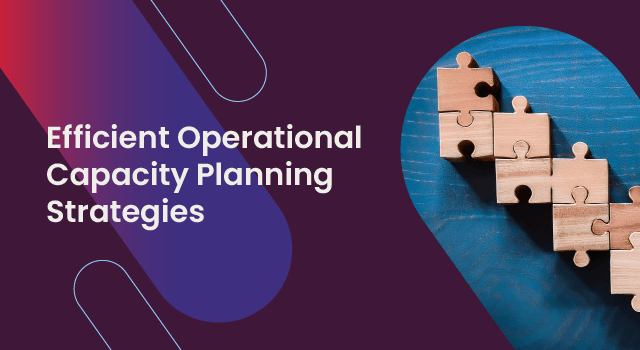Customer satisfaction and inventory costs are vital components of an efficient supply chain. Companies must have enough inventory to meet customer demand, but too much inventory erodes profits through increased costs. A balance is needed to keep customers happy and the business running efficiently.
Measuring order fill rates vs. service levels will help maintain the balance. However, you must understand their relationship in order to adjust and optimize inventories. Mastering the balance between the fill rate and service level can reduce stockouts, inventories, and supply chain efficiency.
Understanding fill rate and service level
Both fill rate and service level focus on meeting customer demand. However, they measure different aspects of performance.
Definitions
The fill rate, or customer satisfaction rate, is the percentage of customer’s orders fulfilled from stock on hand. It measures the company’s ability to fulfill customer orders from existing inventory.
There is no standard measure of a good fill rate. It differs between industries, but it should be over 90%. As with all metrics, you can’t interpret the order fill rate in isolation. You must compare it to other fulfillment metrics like service levels.
The service level is the probability of filling customer demand during an order cycle. It shows how often the business can meet customer demand from the stock. If the company’s service rate is 95%, it can fill orders 95% of the time. Five percent of the time it will run into shortages.
Differences
The fill rate measures the number of fulfilled orders, while the service level measures how frequently you can meet customer demands. You must understand the difference between the fill rate vs. the service level. The fill rate is a retrospective measure based on past performance. Businesses use the service level to plan future inventory levels and safety stocks.
Impact on inventory costs
A business wanting to maintain a high service level must keep more inventory to avoid stock-outs. Higher inventories increase inventory holding costs and raise the risk of obsolescence. Holding costs include storage, insurance, and the cost of capital tied up in inventory.
The fill rate measures how well the business can fulfill customer orders from existing inventory. A high fill rate means that most customers receive their orders immediately. It is a balancing act to ensure a high fill rate without accumulating excess stock. The business must focus on strategic inventory management rather than just improving the fill rate or it may end up with surplus stocks.
Inventory levels must support business objectives, and consider demand variability, lead times, and costs to balance service levels and fill rates.
The relationship between fill rate and service level
A high fill rate often leads to high service levels as customers receive the goods as they require them. However, striving for ever-increasing fill rates will eventually return diminishing results. There is a threshold at which the service level improves marginally while the costs of maintaining increased inventory escalate.
With demand changes and long lead times, businesses must keep large inventories to support high service levels. High inventories come at a cost, so companies must balance order fill rates and service levels with inventories. Managers must find an inventory level that balances holding costs with the benefits of high service levels. Business objectives help to keep a measured approach as demonstrated by these examples.
The healthcare industry must focus on maintaining high service levels to ensure critical medical supplies and equipment are always available. A shortage of medical supplies may be life-threatening, so healthcare providers hold higher critical inventories despite the associated costs.
In fashion retail, on the other hand, the focus is often on quick inventory turnover to reduce the risk of carrying outdated stock. Retailers might prioritize fill rate during peak seasons, and reduce the stock in the quieter seasons to cut costs. Inventory managers in these scenarios will take a different approach to fill rates and service levels.
Calculating and monitoring metrics
Let’s look at the fill rate vs service level formula.
Fill rate calculation
The fill rate is the percentage of orders the business can fill from the available inventory.
Fill Rate = (number of orders filled on time/ total number of units ordered) x 100
If a company receives 100 orders and can fill 95 of them from stock, the fill rate is 95%.
Service level calculation
The service level is the probability you won’t experience any stock-outs in an order cycle. It shows how often the inventory levels will meet customer demand. It can be calculated using statistical probability tables using the z-score. The z-score represents the number of standard deviations from the mean.
The z-score calculates the safety stock used for the reorder point, Safety stocks ensure that the company meets the desired order cycle service level.
Tools and software automation
Inventory management software that integrates into Enterprise Resource Management (ERP) software can automate inventory management processes. This automation includes fill rate and service level calculations. Users can generate customized reports to measure performance.
Strategies to optimize fill rate and service level
Fill rate and service levels are vital statistics. If you continually disappoint your customers with stock shortages, they will find another supplier. There are several strategies you can employ to improve inventory management.
Process improvements
Automated inventory solutions measure inventory in real-time, producing more accurate forecasts and automatically triggering orders. Automation eliminates errors and ensures that orders are promptly placed. Integrated ERP systems ensure that all employees work from the same inventory data.
Make sure that reorder points are up to date by installing dynamic inventory systems to change order quantities and delivery timing to match current demand and inventories.
Demand forecasting
Advanced forecasting functionality powered by artificial intelligence and machine learning predict demand more accurately. Real-time data enables a quick response to demand changes and better decision-making.
Safety stock is your buffer against stock-outs when demand spikes or your inventories arrive late. Regularly monitor and change safety stock levels in response to demand changes and lead time adjustments.
Cross-Functional collaboration
Encourage collaboration between sales, procurement, and inventory management teams. Inventory management strategies must support business goals. Shared data will help produce more accurate forecasts, improving fill rate and order cycle service levels.
Cross-functional collaboration in action
The retail fashion group Zara is an excellent example of how a business can improve fill rates vs supply chain service levels in a fast-paced inventory environment. Zara developed a highly responsive supply chain, with strong collaboration between design, production, and inventory management teams.
Real-time demand data and agile production helped Zara achieve a high fill rate and service level, with a four-week turnaround time from design to store shelves. Zara became one of the world’s biggest fashion brands and revolutionized the fashion industry.
Achieve optimized inventory benefits
An efficient supply chain with happy customers depends on a balanced approach to fill rate vs service levels. Optimized inventories offer the solution with long-term benefits that include reduced costs, improved customer service, and a supply chain that can quickly adapt to changing market conditions.




